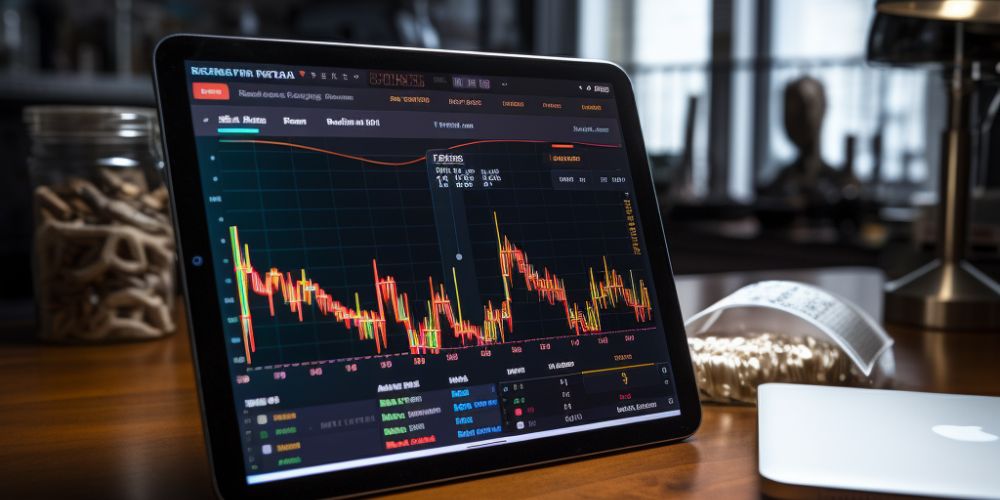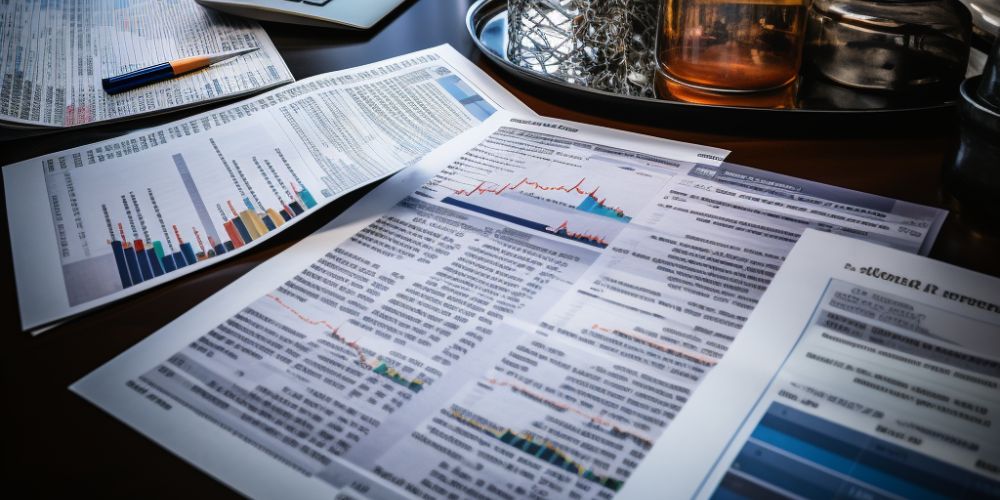Algorithmic trading has gained immense popularity in recent years.
With the use of computer algorithms to execute trades, this approach promises increased efficiency, reduced human bias, and the potential to exploit market inefficiencies.
But, is algorithmic trading profitable?
Well, the profitability of algorithmic trading is a topic of debate. In this article, we will dive deep into the world of algorithmic trading, examining its benefits, factors influencing profitability, real-world examples, criticisms, and limitations.
Understanding Algorithmic Trading:
Algorithmic trading is a rapidly growing field that involves automated trading strategies, eliminating the need for human intervention.
This type of trading relies heavily on advanced computing and complex algorithms to analyze vast amounts of market data and execute trades faster.

Types of Algorithmic Trading Strategies:
There are several types of algorithmic trading strategies, and each comes with its unique characteristics and potential for profitability. Here are some popular strategies:
- Trend-following strategies: These strategies monitor market trends and move with them. A trend-following algorithmic strategy buys assets when they are in an upward trend and sells when they drop below the trendline.
- Mean-reversion strategies: A mean-reversion strategy seeks to buy low and sell high. It operates under the assumption that asset prices will eventually move back towards their long-term averages, enabling the algorithm to profit by identifying bottom and top prices.
- Statistical arbitrage: Statistical arbitrage strategies use statistical analysis to identify market inefficiencies. This strategy looks for assets with similar historical performance that deviate from their standard behavior, creating a trading opportunity.
- High-frequency trading: High-frequency trading is a highly automated algorithmic trading strategy that trades at a very high speed. These trades often take advantage of small price differences to make profits.
Is Algorithmic Trading Profitable? (The Truth)
Whether algorithmic trading is profitable depends on several factors. In general, algorithmic trading uses computer programs and models to automate and execute trades based on market data like prices and volumes.
When properly implemented with robust strategies, backtesting, and risk management, algorithmic trading can be profitable by gaining small advantages from trends and patterns that humans may miss.
However, like any investment strategy, algorithmic trading also carries risks from unforeseen market movements and model flaws. The profitability of algorithmic trading greatly depends on the specific algorithms, strategies, and risk controls developed and applied by each trader.
Factors Influencing Profitability:
There are several factors that can impact the profitability of algorithmic trading.
Technological infrastructure:
Advanced technology is crucial for algorithmic trading to be profitable. The trading algorithms typically require low-latency connections to markets, which can be expensive. A reliable backtesting and simulations platform is also required.
Risk Management:
Proper risk management strategies are essential for any investment strategy to minimize the risk of loss. Algorithmic traders must identify and control risks through portfolio diversification.
Market Conditions:
Market conditions can have a significant impact on the profitability of algorithmic trading. High volatility, low liquidity, and dramatic market movements can negatively affect the profitability of algorithmic trading.
Costs:
Algorithmic trading requires a significant investment of time and money to develop a profitable and reliable trading strategy. Potential costs include data acquisition, technology infrastructure, and human expertise.

Evaluating the Pros and Cons of Algorithmic Trading:
Algorithmic trading has its advantages and disadvantages, and careful consideration is necessary before engaging in this type of trading.
Here are some key pros and cons:
Pros:
Reduced human error:
Elimination of human error when making trades is one significant benefit. Automated trading systems can execute trades immediately once the set parameters are met, which reduces the risk of manual entry errors.
Increased efficiency:
Algorithmic trading systems can process vast amounts of market data in real-time and execute orders at high speeds. With automated trading systems, trades can be executed quicker than manual trading, leading to increased efficiency and profits.
Reduced emotional bias:
Since algorithmic trading systems follow set rules and algorithms, they are free from emotional biases, such as fear and greed, which can influence human trading decisions.
Cons:
Technical complexity:
Algorithmic trading involves complex programming, statistical analysis, and machine learning algorithms that require specialized skills. Implementing automated trading systems and maintaining them can be challenging and expensive.
Reliance on historical data:
Algorithmic trading relies heavily on historical data, raising questions about how much the current market resembles data used to develop algorithms and whether future results will resemble historical ones.
Potential for market manipulation:
Algorithmic trading can create concerns about market fairness, especially with high-frequency trading.
This type of trading can potentially manipulate markets by buying and selling large volumes of shares in a short period, leading to artificial price movements.

Criticisms and Limitations of Algorithmic Trading:
While algorithmic trading has its benefits, there are concerns regarding its impact on the financial markets, its effect on market fairness, and potential risks to the overall market.
Here are some of the criticisms and limitations of algorithmic trading:
Increased Market Volatility:
Automated trading strategies rely on mathematical models and historical data. If a sudden market change occurs, these algorithms may not be able to respond in time, leading to a spike in volatility and potentially unexpected market movements.
Reduced Market Fairness:
Critics argue that algorithmic trading strategies can lead to reduced market diversity and unfair market advantages.
They contend that large-scale institutional traders who use algorithmic trading have an unfair advantage over retail investors who do not have access to such systems.
Ethical Considerations:
Algorithmic trading presents ethical concerns, particularly with high-frequency trading that can manipulate prices by placing large orders and quickly buying and selling them to create false impressions of supply and demand.
Limited Predictive Power:
Algorithmic trading relies on past data to make trading decisions, but future financial markets may not act like historical ones.
As a result, while these algorithms may have predictive power, they can suffer from the proverbial “garbage in, garbage out” problem.
Regulatory Scrutiny:
Regulators around the world are increasingly scrutinizing algorithmic trading to ensure it does not harm the market. They may place limits or regulations on algorithmic trading in the future if needed.
Dependence on Technology:
Algorithmic trading systems rely heavily on advanced technology, which can fail or encounter errors, leading to significant losses.
Poor technological infrastructure and slow network connections can lead to dropped trades, incorrect order placements, and other errors.
Potentially High Transaction Costs:
Algorithmic trading often relies on high-frequency trades, which can result in a high volume of small transactions. The costs associated with these trades, such as commissions, can add up quickly and outweigh potential profits.
To address these concerns, high-frequency trading firms are careful to incorporate all known costs into their estimates of trade profitability.
Regulators also impose requirements on algorithmic trading firms to maintain their system’s security and stability.

Pro Tips:
- Regularly monitor and adjust algorithmic trading strategies to adapt to changing market conditions.
- Stay informed about the latest news and developments that could impact trading decisions.
- Conduct thorough backtesting and simulation to validate and enhance algorithms.
- Consider seeking assistance from experienced programmers or financial advisors for optimal results.
Frequently Asked Questions (FAQs):
Can individual retail investors benefit from algorithmic trading?
Answer: Yes, individual retail investors can benefit from algorithmic trading by leveraging automated trading platforms.
What are the risks associated with algorithmic trading?
Answer: Risks include technical glitches, abrupt market changes, and regulatory compliance concerns.
How much capital is required to start algorithmic trading?
Answer: The required capital can vary, but traders typically need a significant investment to cover technology costs and potential losses.
Is algorithmic trading suitable for all types of financial instruments?
Answer: Algorithmic trading can be employed across various financial instruments, including stocks, currencies, and commodities.
Conclusion:
In conclusion, the profitability of algorithmic trading depends on various factors, including effective risk management, market conditions, and access to real-time data.
While algorithmic trading presents advantages such as increased efficiency and reduced bias, it also has limitations and faces criticisms. By understanding and considering these factors, traders can make informed decisions and potentially harness the profitability of algorithmic trading.
Remember, profitability in algorithmic trading depends on multiple factors, and continuous learning and adaptation are key to success in this dynamic field.


 Tags:
Tags:










